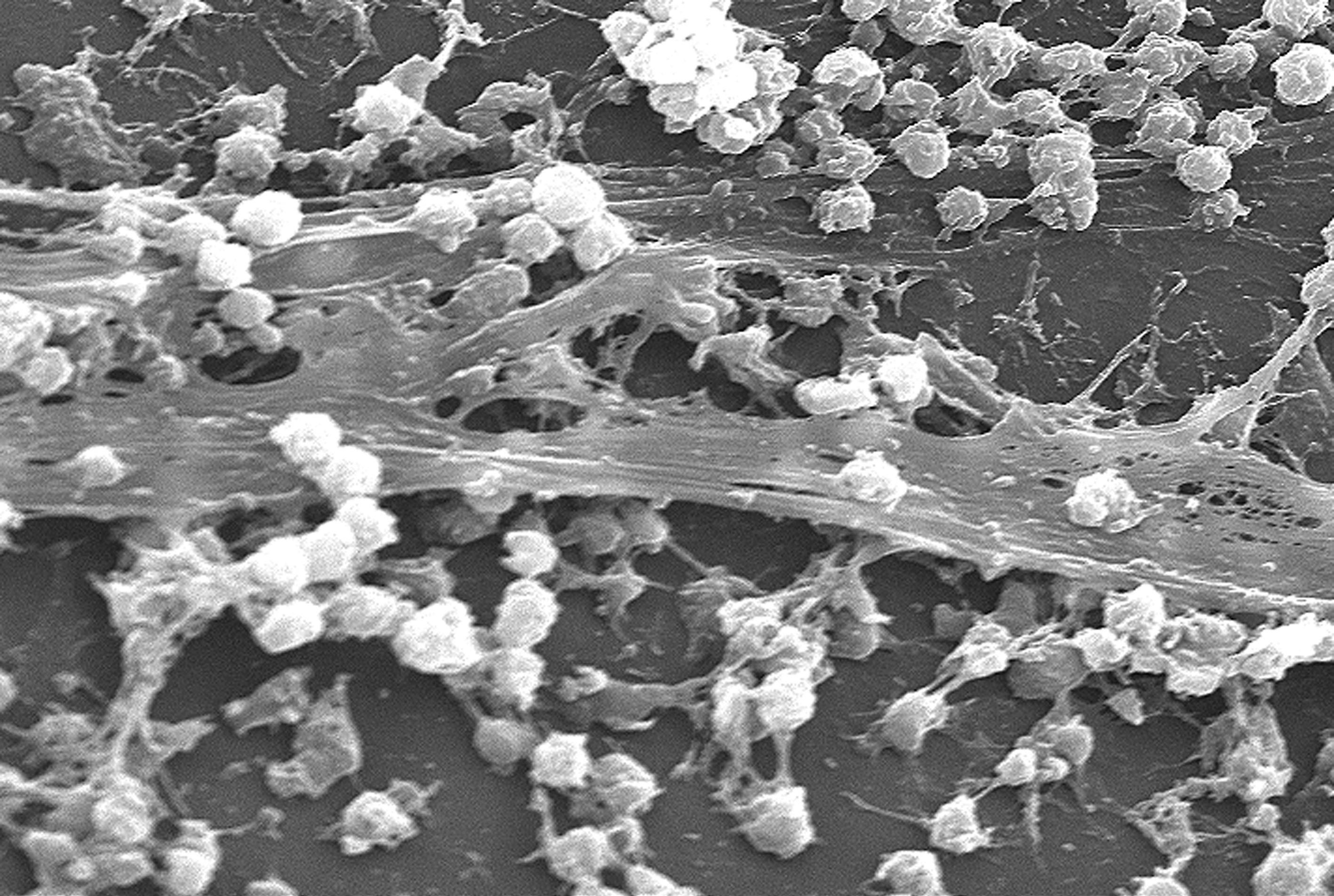|
Staphylococcus Capitis
''Staphylococcus capitis'' is a coagulase-negative species (CoNS) of ''Staphylococcus''. It is part of the normal flora of the skin of the human scalp, face, neck, scrotum, and ears and has been associated with prosthetic valve endocarditis, but is rarely associated with native valve infection. Microbiology Staphylococcus capitis is a bacterium that colonizes the skin, scalp, face and neck. Staphylococcus capitis typically colonises the skin of the head (especially the ears and forehead), arms, and, sometimes, legs. According to one study, head and arm populations of S. capitis persisted over the course of one year in 20% of individuals. ''Staphylococcus capitis'' species has two subspecies: ''subsp. urealyticus'', and ''subsp. capitis''; both may become pathogenic in humans. During antibiotic therapy, the former (but not the latter) expands its distribution beyond the head. Morphology Staphylococcus capitis was originally detected in human skin in 1975 and categorized as a c ... [...More Info...] [...Related Items...] OR: [Wikipedia] [Google] [Baidu] [Amazon] |
|
|
Coagulase
Coagulase is a protein enzyme produced by several microorganisms that enables the conversion of fibrinogen to fibrin. In the laboratory, it is used to distinguish between different types of ''Staphylococcus'' isolates. Importantly, '' S. aureus'' is generally coagulase-positive, meaning that a positive coagulase test would indicate the presence of ''S. aureus'' or any of the other 11 coagulase-positive ''Staphylococci''. A negative coagulase test would instead show the presence of coagulase-negative organisms such as '' S. epidermidis'' or '' S. saprophyticus''. However, it is now known that not all ''S. aureus'' are coagulase-positive. Whereas coagulase-positive staphylococci are usually pathogenic, coagulase-negative staphylococci are more often associated with opportunistic infection. It is also produced by '' Yersinia pestis''. Coagulase reacts with prothrombin in the blood. The resulting complex is called ''staphylothrombin'', which enables the enzyme to act as a protease ... [...More Info...] [...Related Items...] OR: [Wikipedia] [Google] [Baidu] [Amazon] |
|
 |
Staphylococcus
''Staphylococcus'', from Ancient Greek σταφυλή (''staphulḗ''), meaning "bunch of grapes", and (''kókkos''), meaning "kernel" or " Kermes", is a genus of Gram-positive bacteria in the family Staphylococcaceae from the order Bacillales. Under the microscope, they appear spherical ( cocci), and form in grape-like clusters. ''Staphylococcus'' species are facultative anaerobic organisms (capable of growth both aerobically and anaerobically). The name was coined in 1880 by Scottish surgeon and bacteriologist Alexander Ogston (1844–1929), following the pattern established five years earlier with the naming of '' Streptococcus''. It combines the prefix "staphylo-" (from ), and suffixed by the (from ). Staphylococcus was one of the leading infections in hospitals and many strains of this bacterium have become antibiotic resistant. Despite strong attempts to get rid of them, staphylococcus bacteria stay present in hospitals, where they can infect people who are most at ... [...More Info...] [...Related Items...] OR: [Wikipedia] [Google] [Baidu] [Amazon] |
 |
Biofilm
A biofilm is a Syntrophy, syntrophic Microbial consortium, community of microorganisms in which cell (biology), cells cell adhesion, stick to each other and often also to a surface. These adherent cells become embedded within a slimy extracellular matrix that is composed of extracellular polymeric substances (EPSs). The cells within the biofilm produce the EPS components, which are typically a polymeric combination of extracellular polysaccharides, proteins, lipids and DNA. Because they have a three-dimensional structure and represent a community lifestyle for microorganisms, they have been metaphorically described as "cities for microbes". Biofilms may form on living (biotic) or non-living (abiotic) surfaces and can be common in natural, industrial, and hospital settings. They may constitute a microbiome or be a portion of it. The microbial cells growing in a biofilm are physiology, physiologically distinct from planktonic cells of the same organism, which, by contrast, ... [...More Info...] [...Related Items...] OR: [Wikipedia] [Google] [Baidu] [Amazon] |